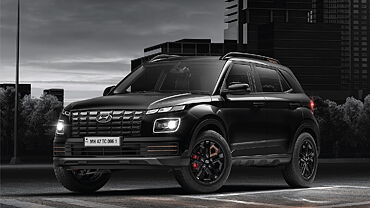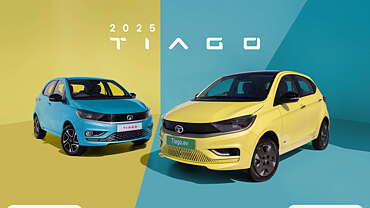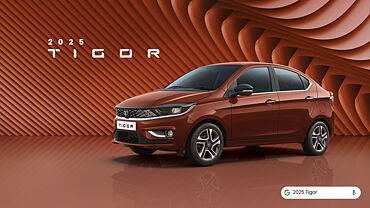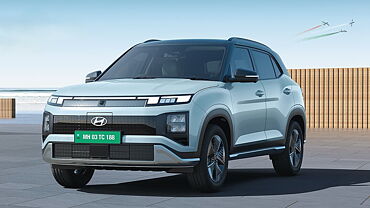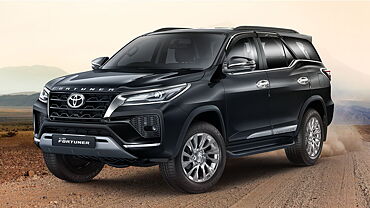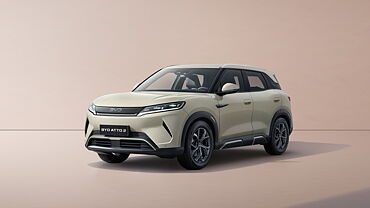
Car-buying decisions in India tend to be based on two key aspects; value for money and more importantly, fuel economy. It is a widely known that the majority of buyers in India choose their set of wheels with their head rather than heart. The first question on any car buyer’s mind, and first words to roll off the tongues of inquisitive onlookers are "average kitna deta hai?" With soaring fuel prices and the majority of buyers opting for financed purchases, the value-for-money (‘VFM’) aspect scores high on their list of priorities. It isn't surprising to find premium manufacturers like Skoda and Mercedes-Benz play the VFM card by packing their cars with a long list of goodies. India is a country where even the luxury car buyer wants bang for his buck; hence a feature-packed product like the Laura with its efficient engine has been a runaway success for Skoda. Priced in the Rs 19 lakh bracket, it is the perfect example of a premium product ticking the two boxes mentioned earlier.
A huge brag factor for most boys is the size of their toys. In most countries, comparisons centre around engine displacement, number of cylinders, power, and not to forget, 0-100kph acceleration figures. Ironically, India is probably the only country where kpl or kilometers per litre is a key comparison parameter for all vehicles (with a few exceptions, of course). This is one figure which tends to be exaggerated by car salesmen. Good fuel economy figures are, quite simply, an ace up any manufacturer's sleeve. Recently, Mahindra-Renault has played the fuel efficiency card quite cleverly in advertisements that claim in bold print, Travel from Mumbai to Delhi on one full tankâ€. Ninety percent of the battle to sell the Logan is won on that very point!
An example in not-so-recent times was the Ikon, aptly marketed as the ˜Josh Machine by Ford. The Ikon was a brilliant car to drive, whose peppy engine provided phenomenal acceleration and it aroused the right emotions in many. The Ikon’s success was short-lived as the brilliant engine had dismal fuel economy. Mind you, the car was fairly frugal if driven carefully, but its sporty nature meant that Ikon drivers loved pushing it to the max, resulting in more visits to the fuel station than they would have liked. The Ikon's main rival, the Hyundai Accent, was nowhere as exciting to drive, but delivered better fuel economy. The Accent managed to generate sales which were superior to that of the Ikon. A minor tweak to the Ikon's engine didn't help matters either as the Josh Machine, which managed to stay well ahead of the Accent on the road, was always beaten on the sales charts.
Modern diesel technology in the form of common-rail and unit injectors seem to be the flavour of the times with every Indian manufacturer. Skoda can be credited with bringing awareness of the capability of modern diesels in India with the Octavia. These high-tech diesel engines deliver staggering fuel economy without compromising on performance. Modern diesels generate high torque at low engine speeds, providing strong pulling power right from the word go. This means that you get the best of both worlds – performance and economy!
Following Skoda's success story in India, every manufacturer has followed suit by playing the diesel card. Maruti has enjoyed phenomenal success with the Swift right since its launch with waiting periods in excess of two months! They have boosted the Swift's sales further by providing a brilliant Fiat-sourced diesel option which in terms of sales has simply put the Swift in a different league. The diesel variants of the Ford Fiesta, Hyundai Verna and Chevy Optra also outsell their petrol counterparts. Such is the demand that manufacturers get away with putting a premium on their diesel models. They play on the psychology of buyers who don't mind shelling out extra initially, as they bear long-term savings in mind while making projected calculations.
I recently made a trip to Goa from Pune with a Ford Fusion 1.6 and a BMW 525d. Both cars used up a half tank of fuel to reach Goa and the cost of filling up the petrol Fusion was Rs 1400, while the BMW that ran on premium diesel cost Rs 1200 to tank up. A 3.0l diesel with a 70-litre tank turned out to be cheaper to refuel than a 1.6l petrol with a 45-litre tank!
On the global front, Jaguar who previously manufactured competent petrol engines only succumbed to the diesel temptation, and Audi have very recently showcased a diesel version of their R8 supercar. Unbelievable but true, and this is the exciting sign of things to come!
